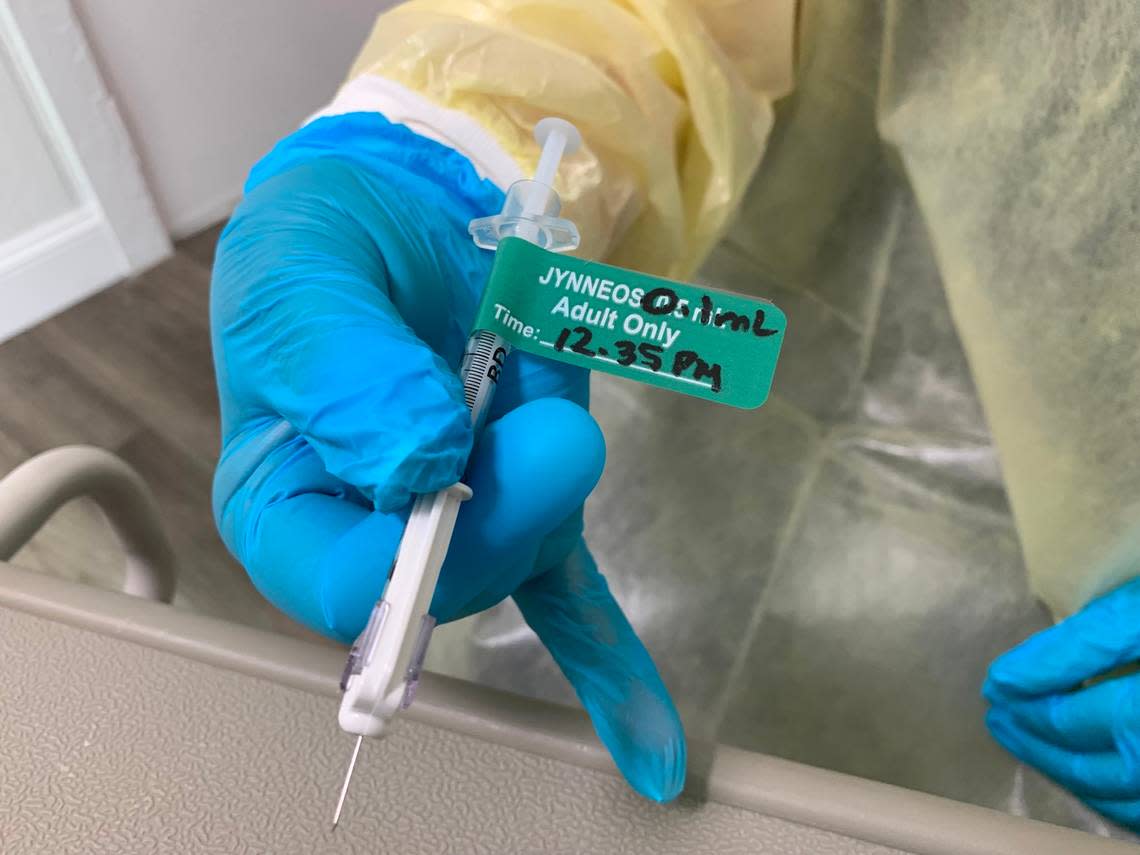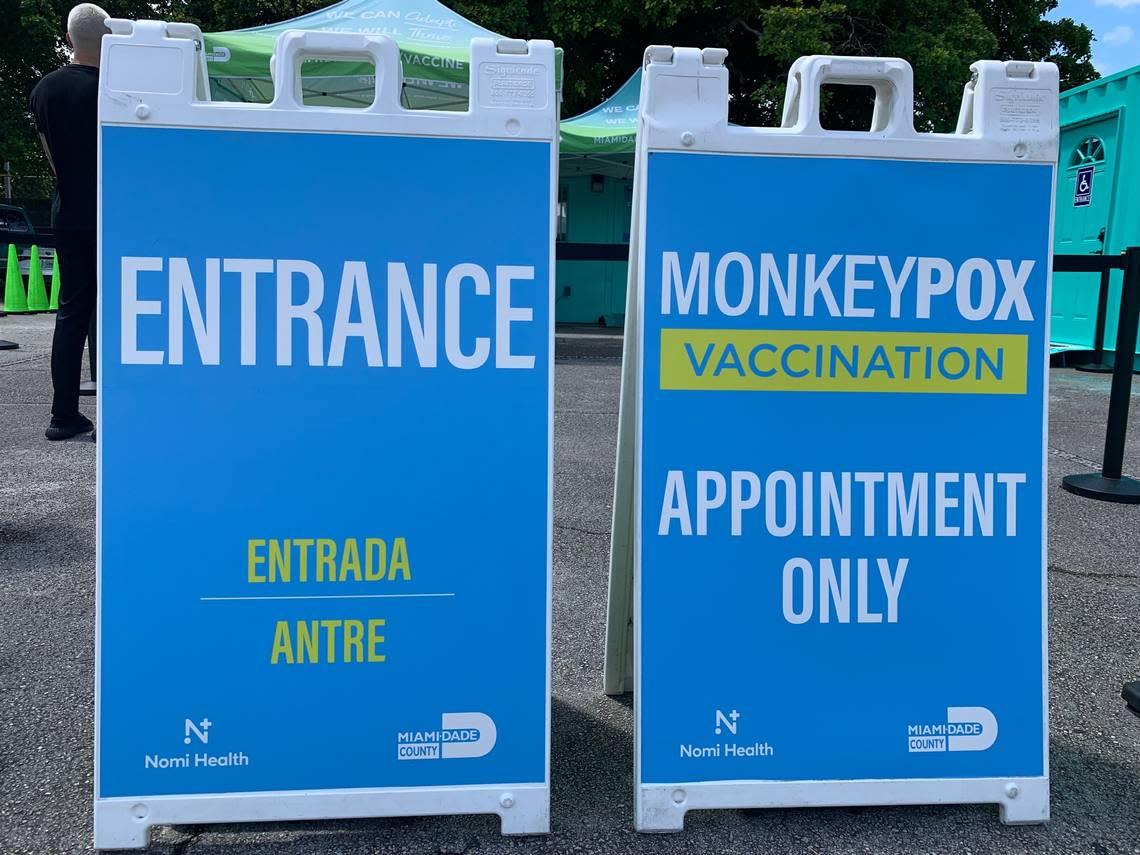How and where did an infant in Florida get monkeypox? CDC releases report on treatment
The CDC released new details this week on a Florida child who tested positive for monkeypox in August.
The child is a 2-month-old infant who was taken to a Florida hospital to be treated for a rash and cellulitis.
Tests revealed the infant had monkeypox — “the youngest patient with confirmed monkeypox infection in Florida to date,” wrote lead author Katharine E. Saunders, a doctor of nursing practitioner, in her report for the U.S. Centers of Disease Control and Prevention.
READ MORE: As monkeypox spreads in South Florida, experts have advice on prevention, risk, vaccines
According to Florida’s Reportable Diseases Frequency Report there is only one child ages 0 to 4 in the state with confirmed monkeypox, and that child is in Brevard County. A preliminary report issued in August listed Martin County as a place of residence.
Cases are added to Florida counties based on the county of residence at the time of the disease identification, regardless of where they became ill or were hospitalized, diagnosed, or exposed. Florida’s Department of Health did not respond to a Miami Herald inquiry about the discrepancy.
What did the CDC’s report say?
The CDC’s report highlighted findings from an epidemiologic investigation and described the public health actions taken.
According to Saunders’ report, the infant was initially evaluated at a hospital’s emergency department for a raised erythematous rash on the arms, legs, and trunk, which had been present for five days. Erythema is an abnormal redness of skin or mucous membranes caused by capillary congestion and can commonly appear as red splotches on the hands or feet, according to Drugwatch.
A rash swab was collected for bacterial culture. The result was negative. The infant was also tested for varicella, herpes simplex virus and HIV, and these tests were also negative.
Two days later, caregivers brought the baby back to the emergency room after the rash progressed to include numerous, diffusely scattered papulovesicular with central umbilication.
The infant was admitted to the hospital with a diagnosis of molluscum contagiosum — a condition characterized by the rounded, dome-shaped, pink, waxy papules.
The infant was given intravenous antibiotics for secondary bacterial cellulitis associated with having scratched a lesion on the arm, according to the CDC.
The lesions then spread to the infant’s back, soles of feet, face and eyelid and these became pustular over the first few days of hospitalization. Swabs from the infant’s forehead and back lesions tested positive for monkeypox 10 days after the rash’s onset and confirmed by the Florida public health laboratory, CDC and Florida Department of Health.
Hospital clinicians consulted with the CDC to determine treatment options.
The infant was treated with oral and intravenous medications. Prophylactic trifluridine drops — often used to treat symptoms of herpes simplex — were given to prevent ophthalmic complications from the eyelid lesion.
According to the CDC, the infant tolerated the treatments well and has fully recovered.
Who was caring for the infant?
The infant had no history of travel, no history of acute infections in the three weeks that preceded the onset of the rash. The baby also had no known immunocompromising conditions and did not attend a child-care center.
The child had no caregivers outside the home. At the home, the infant had four caregivers, who are not named.
One caregiver, listed as A, acted as the child’s main guardian throughout the infant’s hospital stay and had prolonged exposure with skin-to-skin contact.
Caregiver B “reported activities that placed him at high risk for monkeypox exposure during the two months preceding the infant’s illness,” according to the CDC report. That caregiver reported hematuria and fever, followed by a rash within three weeks before the infant’s symptoms started.
One day before the infant became symptomatic, that caregiver moved to another state to get medical care for his symptoms and tested positive for monkeypox two days after the infant’s positive test result. That person is no longer at the infant’s home, according to the report.
The infant had daily close contact with the caregiver in the home for six weeks before the rash onset, according to the CDC.
Monkeypox is spread by direct contact with the infectious rash, scabs, or body fluids, according to the CDC.
“Possible routes of transmission included shared bed linens and skin-to-skin contact through holding and daily care activities,” according to the report.
The investigation also identified three other household family members who were exposed to both the baby and Caregiver B. Caregiver B, another person identified as Caregiver C, and the infant shared a bed for six weeks before the infant started having symptoms.
Symptoms of monkeypox include fever, headache, muscle aches, backache, chills, exhaustion and swollen lymph nodes followed by a rash.
All four caregivers had held the infant with close skin-to-skin contact. The four were given the JYNNEOS vaccine, a two-dose injection given about a month apart and administered in Florida at various locations.

These three caregivers remained asymptomatic at 22 days after the infant’s symptom onset. Caregiver A had also received the smallpox vaccination during childhood.
Where to get the vaccine in South Florida
In South Florida, appointments for monkeypox vaccines can be made at miamidade.gov/monkeypox or by calling 833-875-0900. Vaccine sites are in Miami Beach, 224 23rd St., and at Tropical Park, 7900 SW 40th St., and at Zoo Miami, 12400 SW 152nd St. in Kendall.
Broward’s health department has been partnering with organizations such as The Pride Center at Equality Park and Latinos Salud to help distribute its limited vaccine supply. Check for an appointment online.
U.S. and Florida cases
To date, 27 confirmed cases of monkeypox in pediatric patients aged 0–15 years have been reported in the United States during the 2022 outbreak. The symptoms are similar to those in adults but children might have a higher risk for severe disease, according to Oxford Academic.
According to Florida’s health department through Sept. 21, there have been 1,458 confirmed cases of monkeypox in the state since May, with an additional 974 probable cases, for a total of 2,432.
Cases appear to be trending down. In August, the peak month, there were 1,289 reports of monkeypox in Florida. In September, as of the 21st, there have been 545.
“Timely laboratory identification and thorough epidemiologic investigation are critical for effective public health response to monkeypox infection,” the CDC said. “In this case, contact tracing and post exposure vaccination of close contacts of the affected infant might have prevented further transmission to household members.”
Here’s where you can get a vaccine or test for meningitis or monkeypox

